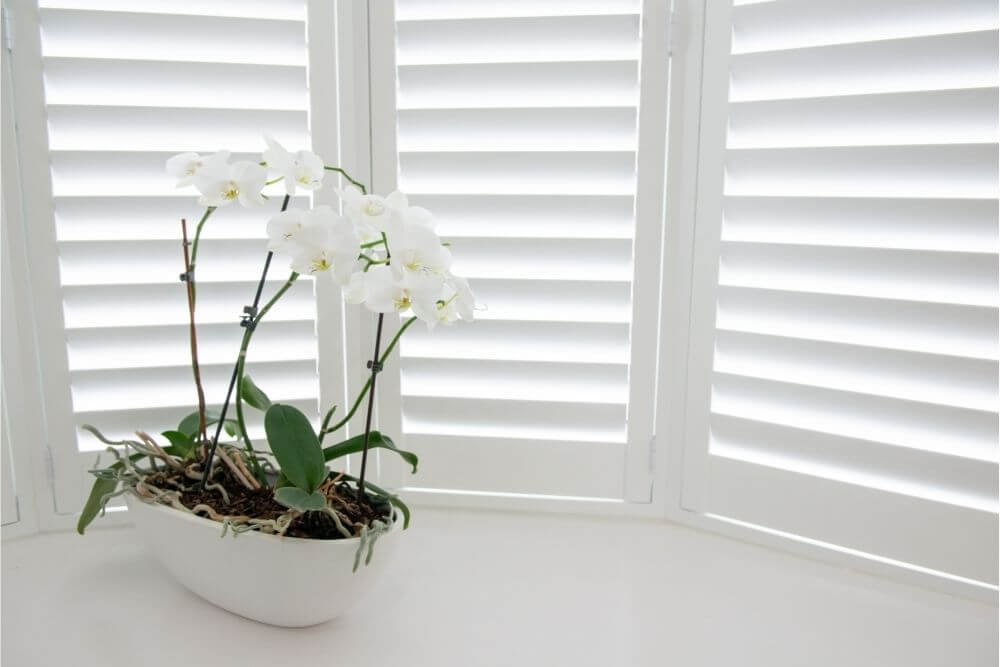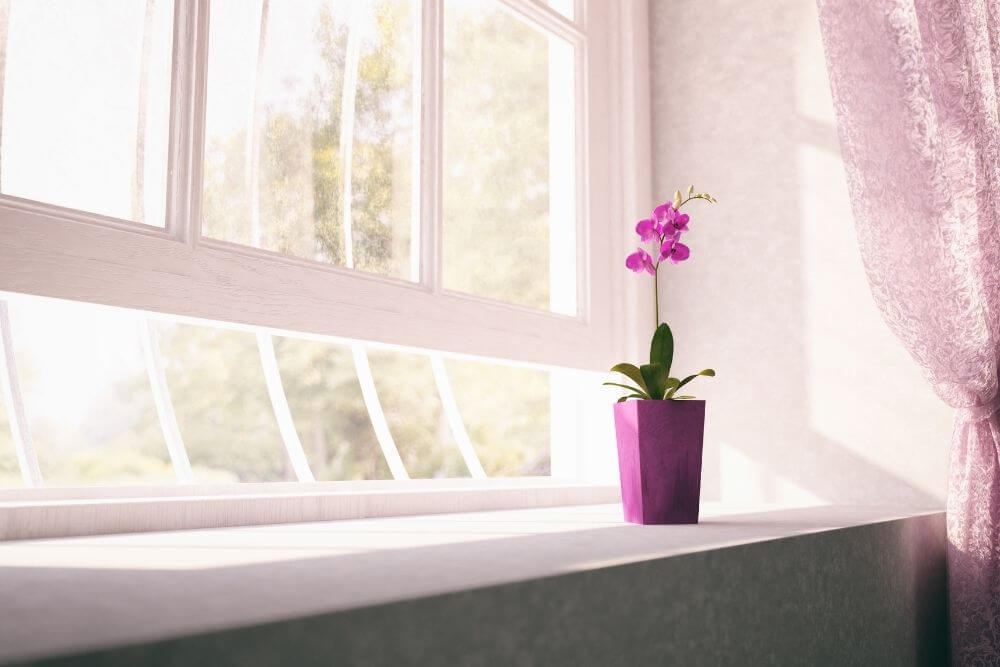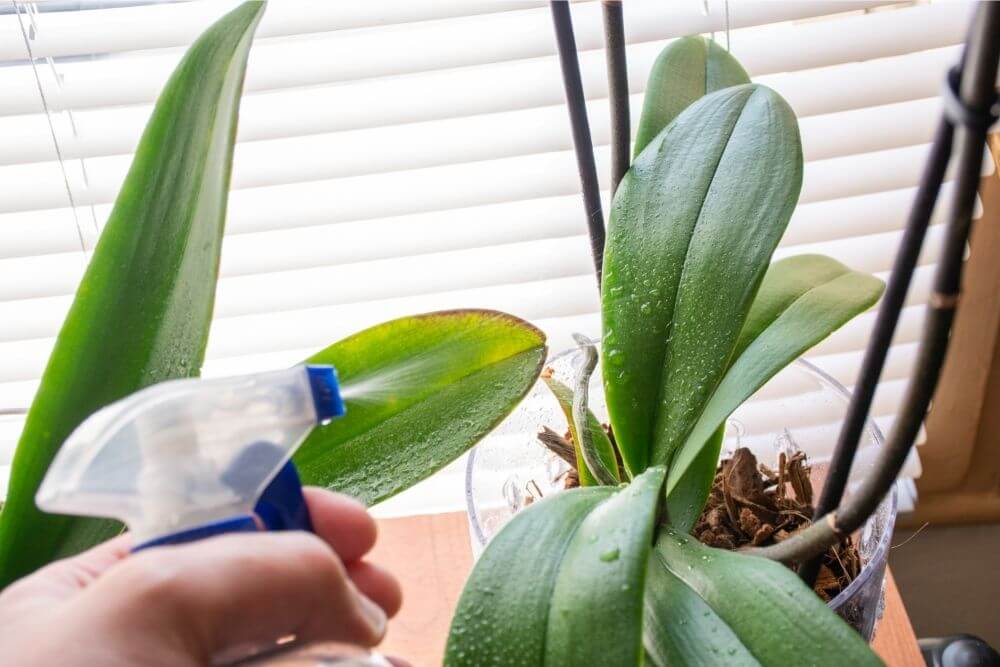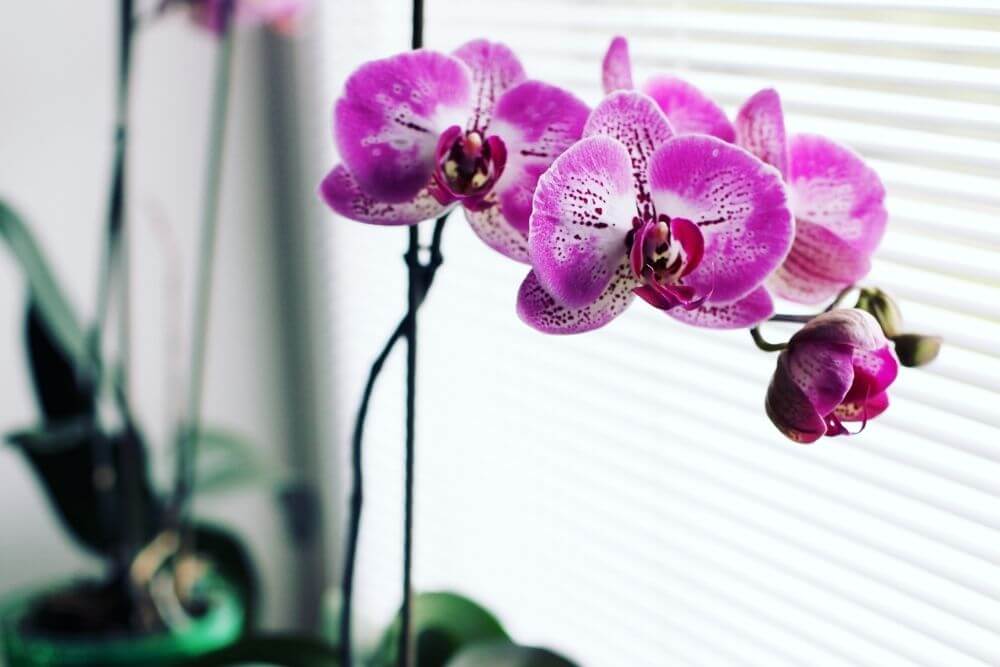Orchids are hard to beat in their beauty and are among the most popular houseplants. But the care of the little divas can sometimes be very troublesome. So there are a few things to consider, among other things, the location should be well selected. So the question arises: do orchids need to be at the window?
Orchids should be placed at the window, ideal are east or west windows. South windows are rather unsuitable, because orchids do not tolerate direct sunlight. Yellow discolored leaves can indicate a too sunny location, limp leaves can be a symptom of too little light.
If orchids do stand in a south-facing window in the summer, you should spray the leaves with water on hot days. Also, light curtains, pleated blinds, or roller blinds can help protect the plants from direct sunlight. However, you should make sure that the location is not too darkened.
In this article we will find out how much light orchids need, how you can find out if your orchids get enough sun, and what else you should consider when caring for your plants.
There are over 25,000 different types and species of orchids and they vary in their requirements for their environment. The information you will find in this article is about the more popular orchid species, such as the Phalaenopsis.
Contents
Put orchids at the window
Orchids are native to the tropical rainforest. They do not grow on the ground, like most other plants, but in the treetops. They belong to the so-called epiphytes, the perching plants.
High in the treetops, orchids are protected from direct sunlight by the canopy and enjoy bright, indirect light.

And that’s exactly how most orchid species prefer it at home. They like it bright, but they do not tolerate blazing sunlight very well.
So the question “Do orchids need to be by the window?” can be answered quite simply: A window location on the east or west side is recommended in summer. Especially east windows offer ideal conditions, because there the plants are particularly well protected from the hot midday sun.
In winter, it may also be a place on the south window. There they should get enough light even in the dark season.
Where are orchids best placed in the apartment?
It is understandable that you want to place your orchids in a place that is easily visible. However, make sure your orchids get enough light there.
As beautiful as orchids may look on a wall shelf or in the living room closet, these locations are not suitable.

If they choose a place far away from windows, orchids will never be able to develop their full flowering glory. A location by a north-facing window is also unsuitable.
How much light do orchids need?
Different species of orchids have different requirements for their light conditions. The most popular orchid species in this country are usually among those that can get by with somewhat less light.
You can divide the different types of orchids into three categories:
- Orchid species that can cope with less light – these least tolerate the blazing sun. In summer, it is best to place them in front of an east or west window. It is advisable to protect the plants from strong sunlight with the help of blinds, pleated blinds, or curtains when placing them on the west window. Phalaenopsis, Paphiopedilum and Miltionopsis belong to this category. They are most comfortable in a brightness of 10,700-21,000 lux.
- Orchid species that need a little more light – they are a little less sensitive to direct sunlight, but it should not be too much, even for these plants. A location on the east or west window is also suitable here. They should also thrive in a south-facing window, provided they are placed far enough away from the window and are adequately protected from the blazing midday sun. Among the somewhat more light-hungry orchid species are the genera Brassia, Cattleya, and Dendrobium. These plants thrive optimally under an illuminance of 21,000-32,000 lux.
- Orchid species that require a lot of light – A few species require particularly high light levels. These thrive best on a west-facing windowsill. They should also thrive in a south-facing window if you protect them from very strong sunlight. Example of this category are Vanda orchids. They require approximately 21,000-53,000 lux.

Regardless of which category your orchid belongs to, the plants need sufficient light. To develop their full flowering glory, they need about 12-16 hours of sunlight a day. The plants should not be exposed to full sunlight for more than 1-2 hours.
If you want to check the brightness at your desired orchid location, special light meters, also called lux meters, are suitable. These are inexpensive, accurate, and help you find the right location for your plants.
Symptoms of too much or too little light
Especially winter can be a problematic time for orchids, as they might be exposed to a lack of light in an unfavorably chosen location. But the burning sun in summer can also quickly become a problem for the plants.
So how can you find out if orchids are getting too little or too much light?
The easiest way is to look at the leaves of the plants. If large, brown spots with dark blue edges form on the leaves, this is often a sign of too much light. Yellow discolored leaves can also indicate a location that is too sunny.
Drooping flowers, droopy leaves, or even plant parts falling off can be an indication of too little sunlight.
Sun protection tips for orchids
Sunburn in humans is extremely unpleasant. And the sun can also cause damage to orchids. Unfortunately, we can’t protect our plants with suntan lotion, but there are a few tips on how to protect your orchids from too much sunlight in the summer. Here are the best:

- Window films – if you do not have the opportunity to place orchids on a sunless window, special window films can help. Window films in frosted glass look are particularly suitable, some films even come with special UV protection.
- Sun shades – we all know them from the car, but they can also be helpful as protection for orchids. Big advantage of sun shades is that you can easily attach and remove them with the help of suction cups.
- Spraying the leaves with water – regular spraying of the leaves in the summer not only helps to create the optimal humidity for the tropical beauty, it can also prevent sunburn. However, it should not be overdone, once or twice a week should be sufficient.
Is artificial light suitable for orchids?
As a rule, orchids thrive best under natural sunlight, but especially in winter this is often in short supply. Even in a location away from the window, such as in a display case, you can consider using artificial light.
You can also consider using artificial light for orchids.
Artificial light is suitable for orchid cultivation if the lamps cover the correct spectra. The lamp should provide as much light as possible in the range of photosynthetically active radiation.
Meanwhile, there are very good LED lamps, where the light color can be mapped accordingly. These are special plant LED lamps. LEDs have the additional advantage of being extremely cost-effective, power-saving and long-lasting.
What temperatures do orchids need?
Not only the right light intensity is important for good growth, but also the temperature should be adapted to the plants, because at the ideal room temperature, the different types of orchids differ in their requirements.
While the Phalaenopsis feels comfortable at a temperature between 20-25° in summer, the Miltonia only needs a room temperature of 17-22°.
In general, it should be noted that the temperature at night may be a few degrees colder than during the day. Orchids also allow lower temperatures in winter. For a detailed list of different orchid species with summer and winter temperatures, click here.
A few tips about humidity
Since orchids come from a tropical climate, special attention should be paid to proper humidity. Especially in winter, it can quickly become too dry for orchids due to the heating air.
The optimal humidity for many orchid species is between 50 and 60 percent. This can be checked very easily with the help of a hygrometer.
If the humidity is too low, the plants dry out quickly and the leaves become limp. If the humidity is too high, the plants are susceptible to mold and bacteria. You can find out how to ensure optimum humidity even in winter here.

Orchids are among the most beautiful houseplants. However, some things must be taken into account when caring for them, so that the plants show their full flowering splendor every year. With the right location, optimal humidity and room temperature, the little divas are quite easy to tame.

